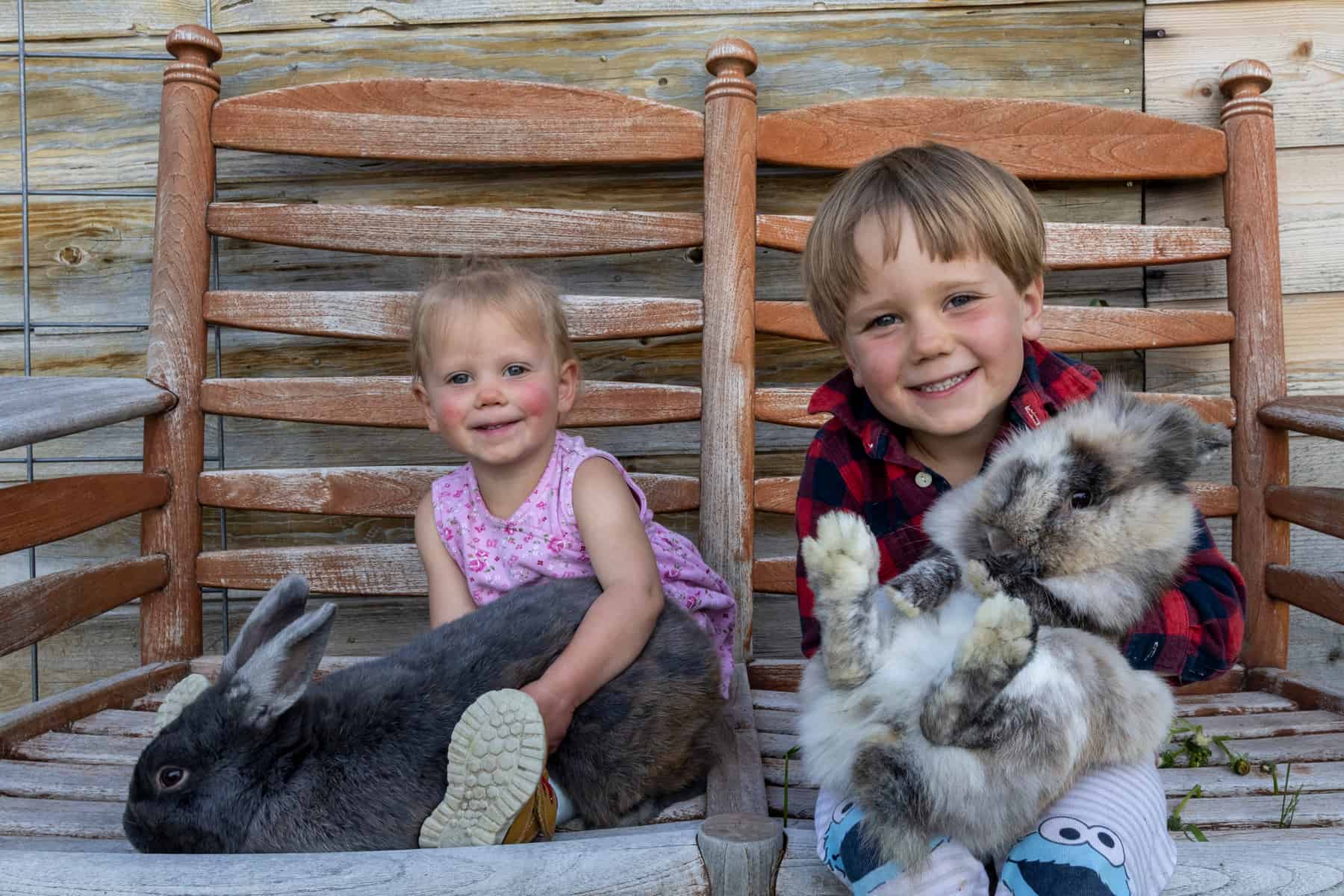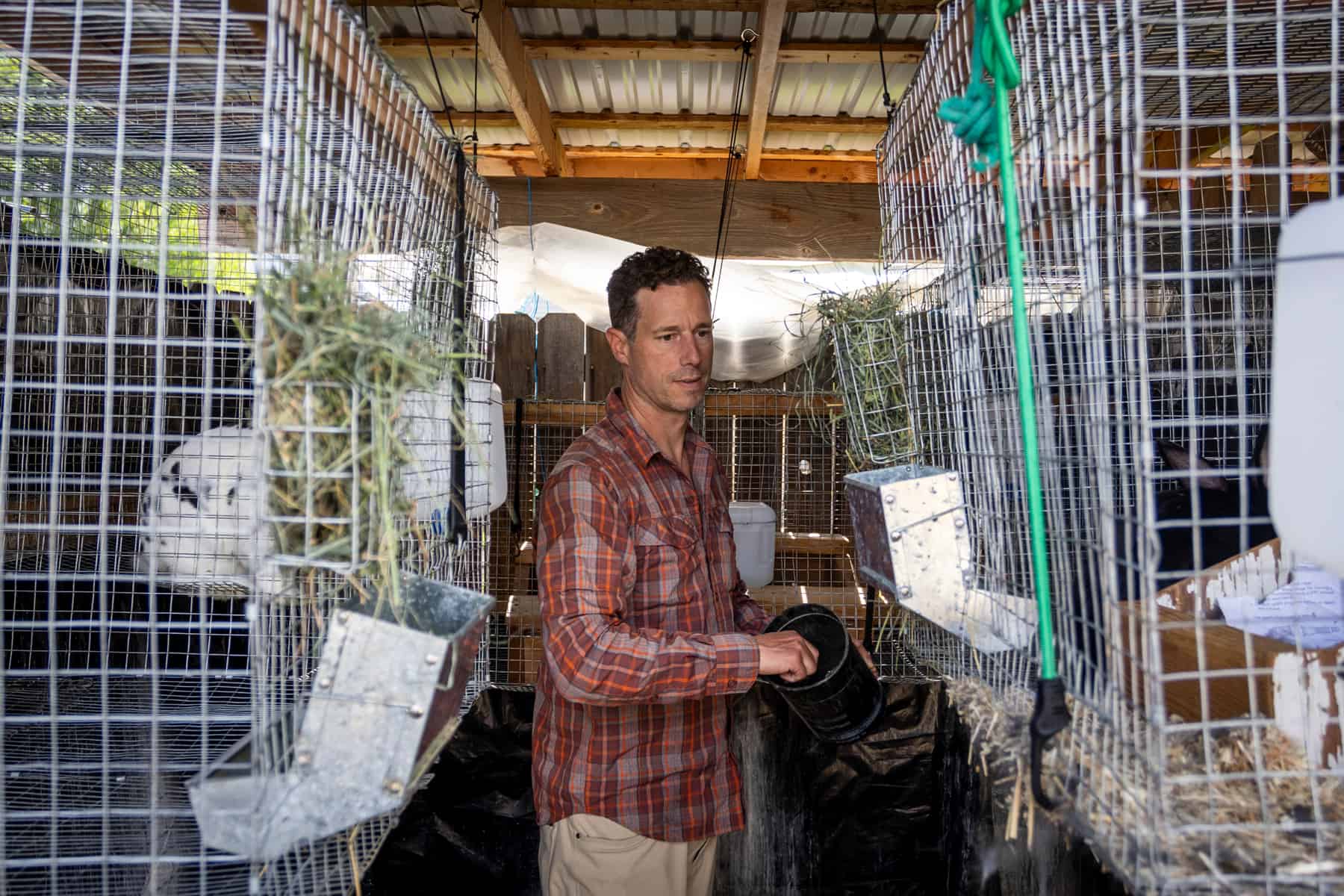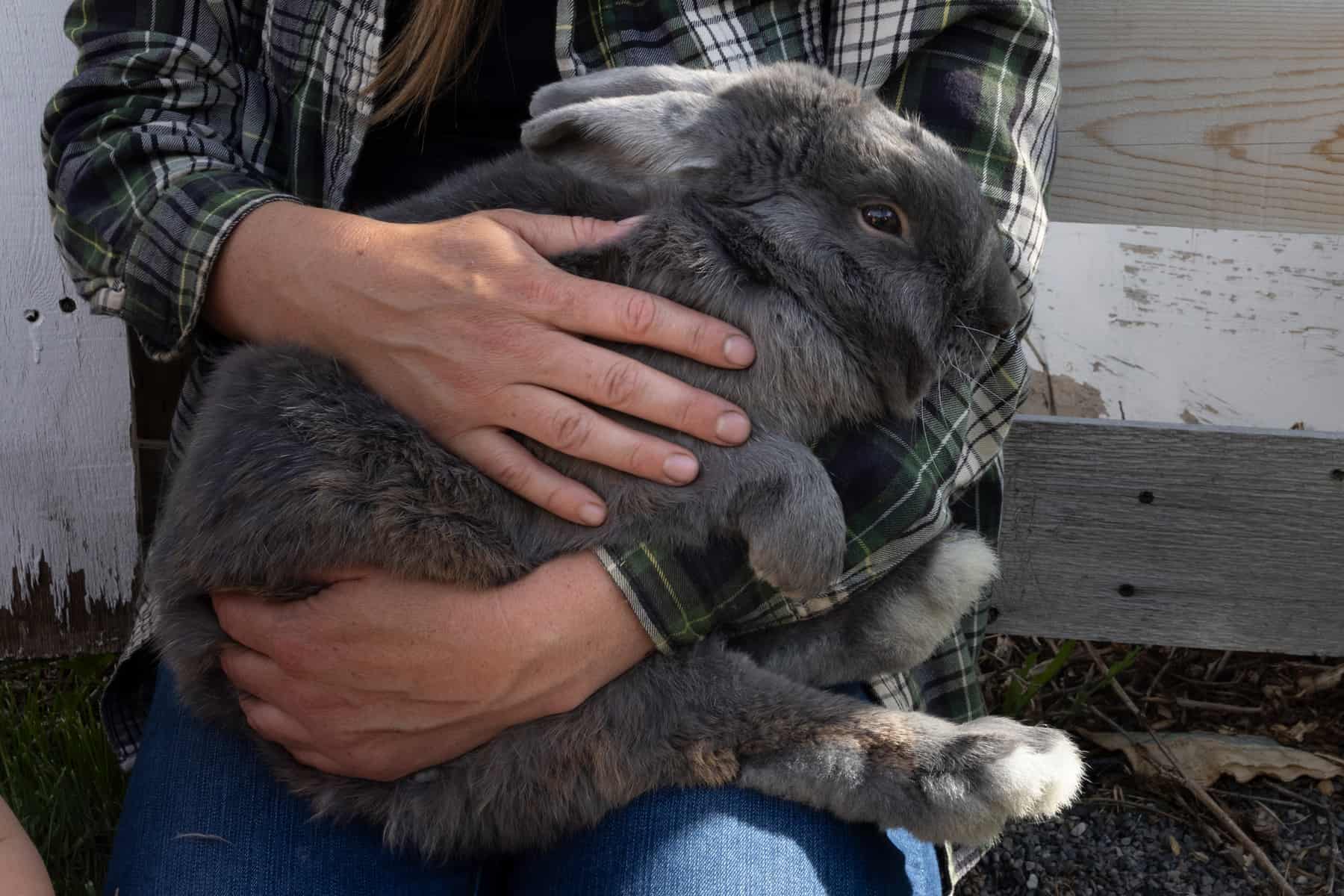By Jenn Rein // Photography by Natalie Behring
—
For centuries, rabbits have been hunted and raised for meat. As far back as the Roman Empire, evidence exists that rabbits were raised in large underground warrens. Warren licenses in medieval Europe were issued to both the aristocracy and to townships. This indicates that the meat was not reserved just for nobles but was available to the proletariat.
Modern agricultural practices in Europe, especially France and Italy, have kept rabbit in play in typical cuisine. Whole rabbits can be found next to chicken, at the local butcher, and in France, it is estimated that a rabbit a week is eaten in nearly every household. Much like chicken, but with a tighter grain to the meat, rabbit tastes slightly sweeter. And the meat from this animal easily takes on flavor when cooked, making it the perfect inclusion to almost any recipe. It can be simply presented or elevated to haute cuisine.
Cuniculture—the raising of rabbits for meat—is not yet a widespread practice in the United States. Around the 18th century, rabbits started becoming pets, as our country’s agricultural practices evolved to include chicken, beef, and pork. But rabbit meat is well worth exploring. It is very low in fat, cholesterol, and sodium, and high in easily digestible protein, calcium, B12, and phosphorus.
Due to the scarceness of rabbit’s availability in the U.S., the meat only really shows up in fine dining. But it’s gaining ground, as raising rabbits for meat is a relatively easy endeavor once a method is established. And if balance is struck between breeding and harvesting, eating this overlooked, yet valuable, protein source could be a regular part of life.

Hare Raising in the Tetons
Justin McCarty, his wife, Kimberly, and their two kids live in Tetonia. The couple takes control of their food chain by using a shed to raise rabbits for meat. They are also avid gardeners, and Justin hunts both bird and deer to feed their young family.
Rabbit became part of their regular menu two years ago. McCarty started raising purebred silver fox rabbits, and then shifted to the Rex New Zealand silver fox crossbreed. Once he was able to land on a breed that worked, his method of raising and harvesting the meat fell into place. This family of four now eats two rabbits a week.
“I, personally, would rather [raise rabbits] myself because I like to know how an animal is treated. I want to know what it was fed and how it was processed. It gives me peace of mind about the meat that my family is eating,” say McCarty.
The McCarty rabbit hatchery holds five doe rabbits, who each have the potential of birthing up to seven kits per litter. There is a thirty-day gestation period, and once birthed, the kits grow exponentially in a short period of time. McCarty harvests the meat between the ages of ten to twelve weeks. All five of his does are never in play at the same time.
“After birthing, they are gaunt and tired. This period requires rest. I only have two to three of the mamas active at once,” he explains.
McCarty’s proficiency at raising and harvesting rabbits for meat is part of a pragmatic approach to sustaining his family. The McCartys often dine on fresh produce long before the short Teton growing season is in full swing, all thanks to rabbit excrement.
“The practicality of raising rabbits is enormous. They don’t need a ton of hay, the feed bags aren’t that big, and the cages aren’t huge. I put their manure in hot boxes, cover it with dirt, and during early spring when it starts to heat up and get wet, it extends our growing season,” says McCarty.

Culinary Versatility
At Forage Bistro & Lounge in Driggs, chef and owner Christian Hanley features rabbit on his menu each season. At the time of this writing, the offering happened to be rabbit enchiladas.
“We used one of Justin’s rabbits to test the recipe. We braised it, shredded it, and created the enchiladas.” explains Hanley.
Hanley’s source for the daily Forage menu, however, is D’Artagnan, a meat distributor that specializes in game, duck, and poultry. With the philosophy that, food raised right tastes better. The company is committed to humane practices and chooses its partnering farms based on this standard. Farm partners do not use antibiotics or hormones in the raising of the animals that are harvested for their meat.
“I consider rabbit a gateway meat for people who feel comfortable with chicken or white meats. This is where they can venture into the game realm. Rabbit isn’t over-farmed, and we’re not throwing rabbits in cages like we are with chickens,” Hanley explains.
As far as flavor is concerned, he is specific. “A rabbit has fast-twitch muscles and more fat running through the grain of the meat. It’s not a fatty meat per se, but it eats that way, like thigh meat on a chicken.”

Achievable Agriculture 101
The USDA does not consider rabbit a livestock. As a result, there are no licenses or permits required to raise rabbits for meat. When performing research on the topic, you’ll find only a dozen rabbit breeds are appropriate for food consumption. However, there are many more breed-specific rabbits that are meant for keeping as pets.
Some sites report that keeping a rabbit as a pet is a high- maintenance pursuit. Rabbits raised for meat, however, are kept differently, and the process of raising and butchering the animal requires consistency and planning. Once a method is established and maintained, it’s not a complicated endeavor.
A mother rabbit’s gestation is thirty days. Once her kits are born, the stages of growth start to align quickly with culinary use:
A “fryer,” or young rabbit, refers to a rabbit that is eight to ten weeks old. The flesh is tender, fine grained, and a bright pearly pink color. These rabbits are prepared in the kitchen in the same way as young poultry.
The term “roaster” or “mature rabbit” refers to a rabbit that is ten to twelve weeks old. The flesh is firm and coarse-grained, and the muscle fiber is slightly darker in color and less tender. The fat may be creamy in appearance, in comparison to that of a fryer. This stage of rabbit is often prepared on the grill.
Similar to chicken, the meat of larger, older rabbits becomes tougher, so the best methods of cooking are braising and stewing. The McCarty family uses large roaster rabbits in “Sardinian Hare Stew,” a recipe developed by Hank Shaw, a James Beard Award-winning author and chef. (You can find the recipe at honest-food.net/hare-stew-hard-times.)
If you’re up for trying your taste for rabbit, an online menu search unveils several regional restaurants that serve rabbit as an entrée. Local Restaurant and Bar in Jackson has a rabbit pasta dish on their dinner menu. Other area establishments consistently serve rabbit options as “game meat.” And don’t forget Forage’s delicious rabbit enchiladas! Dining on rabbit is not outside the realm of possibility here in the Tetons and is definitely worth seeking out.

